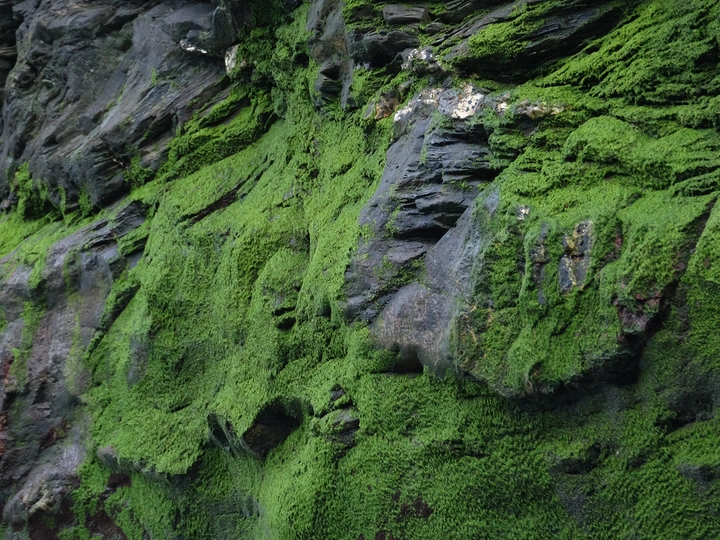Columnar

Alexandra Lăcătușu
Anete Salmane
Based at University College London, LA³B is a group of European researchers that investigate concepts of bio-integration concepts through architectural design and active materials. With a background in microbiology, Anete Salmane (Latvia) is currently working as a laboratory coordinator and lecturer with a passion for making. Andreas Körner (Austria) is an architect and educator who investigates notions of augmented weathering and ornament. Alexandra Lăcătușu (Romania) is a PhD researcher at Bio-ID at UCL, investigating biotic exchanges and environmental benefits of moss growth on urban bioreceptive surfaces. As a collective, we place the value of the processes at the centre of our practice. We are fascinated by (bio)chemical interactions in matter, interfaces of microorganisms and materials, metabolisms, exchanges and cycles. We try to unfold and interrogate the largely unseen processes that become visible and meaningful across scale and time, locally rooting ecology.
Columnar explores the integration of the enhanced rock weathering concept within an urban environment to sequester atmospheric carbon dioxide. By delving into the intricate relationships between geometry, weather, and material, we bring layers of unseen microscopic and molecular processes into the discourse, challenging traditional conceptions of materials’ value over time.
Our work explores systems of heterogeneously modulated elements, which create semi-hidden layers for water flow and chemical interactions between materials, environments and situated ecologies. Examining the environment, the density of designed elements can be adapted to work in tandem with existing urban features such as edges and gutters which influence the water availability on vertical surfaces. Inspired by the natural chemical weathering of certain types of rocks, primarily silicates like basalt, our aim is to understand and orchestrate specific chemical exchanges at the surface of architectural materials.
We investigate the role of the material composition by using a variety of aggregates combined with a cement binder to achieve a variation of surface textures and porosity. These parameters enable naturally occurring chemical weathering processes, that in time foster biochemical exchanges and the expanse of new ecologies.
Concrete has been abundantly used in architecture during the last century and has lately been heavily contested due to its high embodied carbon resulting from its production process. However, it is rarely acknowledged that concrete curing and weathering also absorb carbon dioxide. The chemistry and mechanics of concrete carbonation and enhanced rock weathering are similar, both taking place at the materials’ interface with the atmosphere. By combining these two gradual processes - carbonation and weathering - we are questioning how to make use of passive urban surfaces and reframe a dynamic material deemed unsustainable.